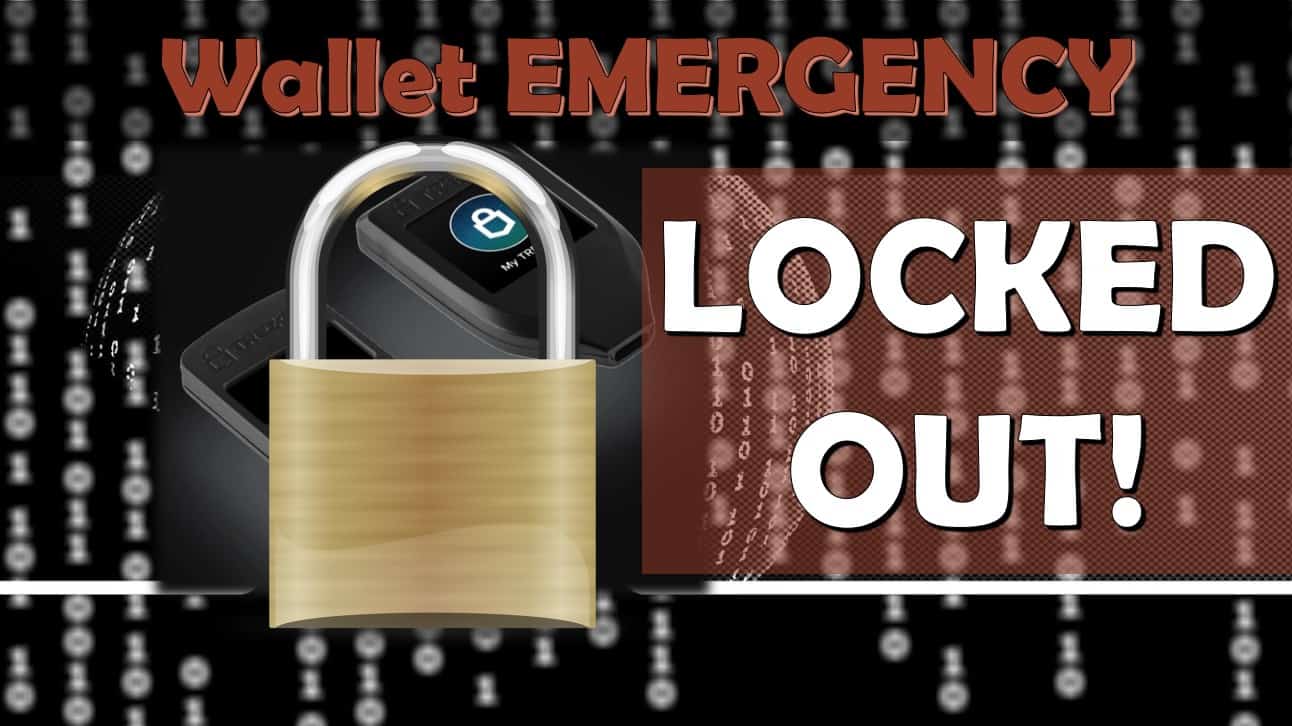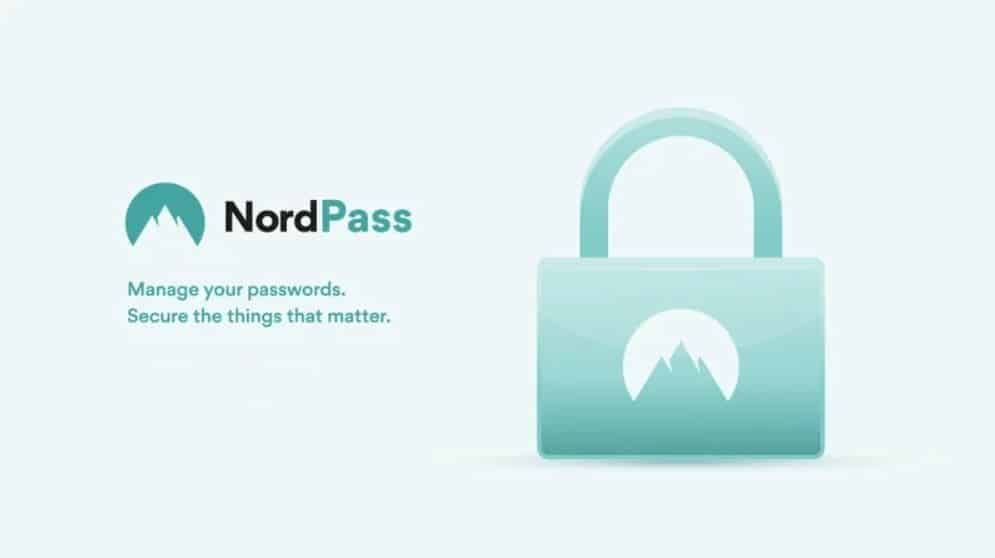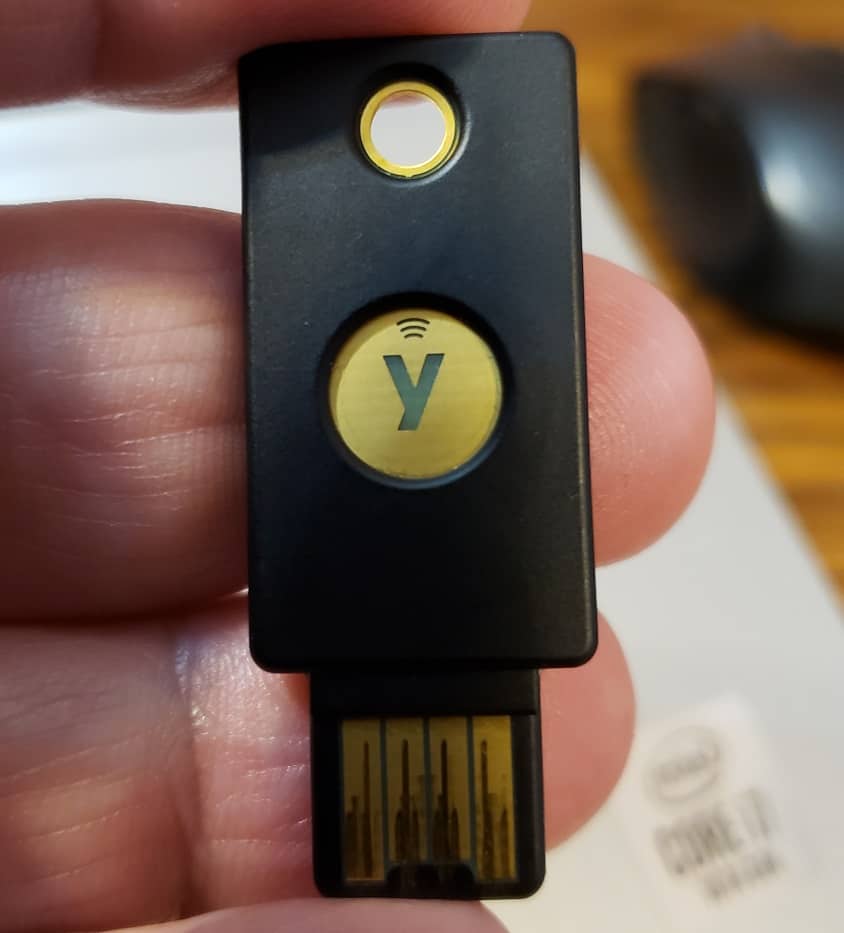
Lost Wallet Emergency: Your Wallet Recovery Options
I feel the best way to begin this article is with the quote from Benjamin Franklin; “an ounce of prevention is worth a pound of cure.”
Remember, the key to your digital fortune isn’t a physical one… it’s a digital code known as a wallet… and failing to follow good backup, and prevention strategies when it comes to your crypto wallets can be the kiss of death.
What does that mean?
It means being unable to recover your assets when you need to.
However, by following best practices, you may have the ability to regain access to your assets… maybe…
I’m not going to sugar coat it… your options are extremely limited!
Key wallet recovery methods include using a seed phrase, backup restoration from files, and device hacking. Each method has its merits and associated risks. When successful, users can regain access to a lost or compromised digital wallet. The key to successful wallet recovery lies in prevention, by secure storage of backup credentials, and a comprehensive understanding of the chosen wallet’s recovery process.
In this article I aim to unravel the complexities of wallet recovery in the simplest terms possible. I will shed light on the importance of prevention ahead of the need for wallet recovery, and offer an understanding of some of the recovery options available.
We’ll delve into the nuts and bolts of cryptocurrency wallets, explore why access to them might be lost, and most importantly, how to regain access.
The Wallet Recovery Path
- Crypto Wallet Overview
- Reasons for Losing Wallet Access
- Preventing Access Loss
- Wallet Recovery Options
- Wallet Recovery Wrap-up
- Frequently Asked Questions (FAQ)
Crypto Wallet Overview
Cryptocurrency wallets serve as a digital interface between you and the blockchain, where your crypto assets actually reside. A wallet is an interface that allows you to store, send, and receive various types of cryptocurrencies.
So, to relate it to our current monetary situation… much like a physical wallet stores your cash and cards, a crypto wallet securely holds the keys to your digital assets.
At its core, a crypto wallet works by interacting with various blockchain networks to enable transactions.
It does this thanks to a pair of cryptographic keys.
The first of these keys is known in cryptography as the Public Key, which functions like your account number, and can be shared publicly. This is how others can send you crypto.
The second key is a Private Key. Much like an account password, it should always be kept secret, because it is this key that enables access to the wallet and authorizes transactions.
Public and Private keys are extremely important to the very existence, and overall operation of your crypto wallet. So much so that I’ve dedicated this comprehensive article to understanding them.
You should definitely take some time to read it!
These wallets can offer users various features, and each can cater differently to a user’s needs.
Types of Crypto Wallets
There are five types of crypto wallets, each one has unique characteristics and differs in how, and where it’s used. These types are:
Desktop Wallets: These wallets are downloaded and installed on a PC or laptop. They offer higher security than web wallets, but are ultimately only as secure as the device they are operating on. An example would be Exodus wallet. Learn more about desktop wallets here.
Hardware Wallets: These are physical devices designed to secure crypto assets offline, making them resistant to online threats. Examples include Tangem and Trezor. Learn more about hardware wallets here.
Mobile Wallets: These are applications installed on a smartphone or tablet. They are more convenient for regular or on-the-go transactions, but may be vulnerable to malware. Trust Wallet would be an example of a mobile wallet. Learn more about mobile wallets here.
Online Wallet: These are accessible via a web browser. They also offer on-the-go convenience and access to Web3 properties. However, they rely heavily on the security measures of the hosting platform. MetaMask is an example of this type of wallet. Learn more about online wallets here.
Paper Wallets: These are physical printouts of both public and private keys. They are immune to online threats, but can be physically lost or damaged. Learn more about paper wallets here.
While each of these types of wallets live and operate on different devices and in different environments, most of them allow you to self-custody your assets.
Though self-custody is not something we’re going to discuss in great detail here, the importance of self-custody can not be overstated.
Wallets that are self-custody options are often referred to in this space as noncustodial wallets.
I encourage you to take time to read this article explaining the difference between custodial and noncustodial wallets so you can understand which is best for you.
HINT: It’s almost always noncustodial!
As we continue to talk about wallet recovery options, you’re going to discover that if you have your wallet’s seed phrase, you always have access to your wallet.
Seed Phrases
Arguably the most important piece of the crypto wallet pie is your wallet’s seed phrase.
A seed phrase, also referred to as a recovery phrase or backup phrase, is like a magical key that can unlock your digital treasure chest if you ever lose access.
In a nutshell, it’s a series of 12 to 24 random words. When you create a new wallet, you’ll be given this seed phrase.
It’s incredibly important because, as I’ve just alluded to, it’s the one thing that can help you regain access to your crypto treasures if you ever forget your password, lose your device, or your wallet gets damaged.
I could never do justice to the overall importance of your seed phrase here. So, I’ve taken the time to break it down in great detail.
You can find this information here.
While it may contain much more than you ever wanted to know about seed phrases, you’ll be glad you read it if you ever lose access to your wallet!
So, if you ever lose your wallet, or forget your password, you just need to enter these words in the right order, and voilà, your digital riches are back in your control.
And while having the ability to do this is great, perhaps having an understanding of some of the common reasons for losing your wallet access in the first place might be beneficial.
Reasons for Losing Wallet Access
At the end of the day, not all wallet users practice good wallet hygiene.
What does that actually mean?
Basically, users fail to do the basic things that would help them never lose access to their digital assets.
Remember, most often, you are the weakest link.
Your digital wealth is only as secure as your access to it.
So to help you better prevent losing access to your wallet, let’s discuss some of the most common ways that users sacrifice their connection.
Forgotten Passwords
One of the most common reasons people lose access to their crypto wallets is due to forgotten passwords or PINs.
Unlike traditional banking systems, cryptocurrency wallets, especially noncustodial wallets, don’t have the ‘Forgot Password?’ option.
Therefore, forgetting your password or PIN can mean losing access to your wallet.
The good news with this type of issue is, as long as you have access to your seed phrase, you still have access to your wallet. You will just have to jump through a few ‘hoops’ to get back in.
Hardware & Software Errors
How many times when we’re working online do we receive an ‘error’ message?
What about the ‘blue screen of death’ on a computer?
Software errors, such as glitches in wallet applications or corruption in device storage, can potentially lock you out of your wallet.
Bugs could cause the application to malfunction, while storage corruption could lead to loss of vital wallet data.
Having seed phrases, and file backups, can help to mitigate this issue if it occurs.
Lost or Damaged Paper Wallets
While a paper wallet is probably the most secure option with relation to the current online threats from hackers and the like, they have an entirely different set of vulnerabilities.
Paper wallets can be misplaced, damaged, or destroyed.
Remember, in the case of paper wallets, your public and private keys are printed out on a piece of paper, so any loss or damage means irreversible wallet loss
Keeping paper wallets in a secure, waterproof, fireproof location is crucial.
Additional loss prevention methods with these wallets include creating duplicates, and/or using additional backup methods.
Lost or Stolen Hardware Devices
Hardware wallets are physical devices that store your private keys offline. They are revered by many in the crypto space as the best wallet option, but they can be misplaced or stolen.
Hardware wallets are the best wallet option for most investors in the cryptocurrency space. All wallets have drawbacks, but in the case of hardware wallets, the benefits more than out-way the risks
To mitigate the physical loss of a device, maintain multiple backups.
Ideally, these backups should be in geographically separate locations, and secured in a way that protects from an EMP, fire and water.
As you might imagine, if these devices are lost without a backup, the cryptocurrencies controlled by this wallet become inaccessible.
By understanding these risks and practicing good wallet hygiene, you can ensure a safer and more secure cryptocurrency journey. A little effort now can save you from future heartache.
However, how can you prevent the unthinkable from happening?
Preventing Access Loss
I began this article with a quote from Benjamin Franklin… and as I continue here, hopefully you continue to sense the theme… be prepared ahead of time!
I mean, let’s think about it, your crypto wallet is a modern-day equivalent of a personal bank. Just as you wouldn’t leave your bank vault door wide open, you shouldn’t leave your wallet vulnerable to potential threats.
Wallet security serves as a digital lock, keeping your assets safe from malicious actors, cyberattacks, and unforeseen mishaps.
But, securing your wallet is not just about preventing unauthorized access… it’s also about preparing for unexpected scenarios that might lead to loss or damage.
Do you need another analogy?
No problem… think of it like locking your house doors, but also having home insurance for those ‘just in case’ moments.
In the world of cryptocurrencies, the equivalent of that insurance is your wallet backup.
So, how can you create that ‘insurance policy’?
Create Layered Security
Just like a king needs multiple zones of protection for his castle, you need to have multiple layers of protection to keep your wallet, and ultimately your crypto assets safe.
Each layer serves as a protective barrier, and together, they form an impressive fortress for your digital wealth. By doing this, you can ensure that even if one layer is compromised, others are still standing to protect your assets.
Here’s some of the ways you can build this fortress around your wallet.
Use Strong Passwords
Securing your crypto assets almost always involves crafting strong and unique passwords. Frankly, a strong, unique password is something that everyone should understand and use, no matter what you are trying to protect.
As you already know, passwords should be long, complex, and not easily guessable (avoid personal information). Use a mix of uppercase and lowercase letters, numbers, and special characters.
Consider using a secure password manager to remember these complex passwords. I use, and recommend NordPass.
While most of us use passwords on a daily basis, sometimes it’s a good idea to get a brief refresher about their importance and best practices.
To that end, you should read my comprehensive article about passwords. It is part of my online security series and will help you in creating security layers around your crypto assets.
While passwords can be a great start in your security barricade, there are other options to step things up a notch.
Use Two-Factor Authentication (2FA)
The next step our fictitious king might take to protect his castle is to dig a moat around it.
While we’re not going to dig a moat around our crypto wallet, think of this next security step kind of like having that moat. So, even if someone breaches your password, they’ll encounter an additional layer of security.
That next layer is two-factor authentication (2FA) or multi-factor authentication.
Typically, two-factor authentication adds an extra layer of security by requiring a second form of verification, typically via an app like Google Authenticator, Authy or even a text message.
2FA requires you to enter a one-time code, ideally generated on a secondary device, such as your smartphone, to access your wallet.
Even if someone were to discover your password, they would still need this second factor to gain access.
I use and recommend YubiKey.
This form of multi-factor authentication requires the person trying to gain access to a wallet to be in physical control of the key. This adds a crucial extra step that potential intruders must overcome.
Honestly, this is an important security step for many online activities. Because of this, I have written this complete article outlining its importance.
Reading this article will definitely give you the knowledge you need to step up your security.
But for many of the different types of wallets, their security is only as good as the security of the device that they’re downloaded on.
Use Anti-Virus Software
If our fictitious king was preparing his next line of defense, it would be the guards on the walls.
Anti-virus protection is the guards, the software that protects the devices you have your wallets stored on.
These programs can detect, and remove malicious software that could compromise your device, and ultimately your crypto wallet.
This is an area where you get what you pay for. So, invest in reliable anti-virus and anti-malware software.
I use, and recommend Webroot.
New threats happen every day, so regularly update and run scans to detect and eliminate these potential threats.
Understanding more about how this malware protection works is critical, not just for your crypto, but for every device you have connected to the internet.
So, I highly recommend you read my dedicated article about anti-virus protection.
But, believe it or not, there is something even simpler that people often forget to do that in and of itself, can help keep their devices safe.
Keep Firmware & Software Updated
In the kingdom of our fictitious king, this step would be like making sure everyone is healthy.
But in the world of technology, keeping your devices healthy and current is not just about having the latest gadgets… it’s also about ensuring that your existing devices are up-to-date.
Performing regular software, operating system (OS), and firmware updates, plays a critical role in the performance, security, and overall functionality of your devices.
But, before delving into the “why” of updates, let’s clarify a few of the terms we’re going to discuss.
Software Updates: These involve improvements to the applications and programs on your device. Think of them as refinements, bug fixes, and enhancements that make your apps run smoother and more efficiently.
Operating System (OS) Updates: This level goes deeper, affecting the core software that manages your device’s hardware, and software resources. OS updates often come with security patches, improved stability, and new features.
Firmware Updates: Even deeper still, firmware updates target the software embedded within the hardware itself. They optimize device performance and can introduce new functionalities.
At the end of the day, regularly updating your devices is not just a matter of convenience; it’s a financial strategy. Neglecting updates can lead to costly repercussions.
Outdated software might become incompatible with newer apps or services, forcing you to upgrade or replace your device prematurely.
Additionally, data breaches due to unpatched vulnerabilities can lead to financial losses and identity theft.
A good rule of thumb is to enable automatic updates wherever possible. This ensures you receive the latest patches and improvements without having to remember to check and do it manually.
If there is a major update for your device, it’s a good idea to back up your data before performing the update. While rare, updates can occasionally cause issues. A backup ensures you won’t lose important files.
By investing a little time in updates, you can potentially save substantial amounts in the long run.
Desktop and mobile wallets are extremely vulnerable to this type of security exploit.
Do yourself a favor and read this detailed article about the vulnerabilities of your cell phone.
You’ll be glad you did!
However, you can increase the security around your crypto assets simply by choosing a different device.
Use a Hardware Wallet
Shall we keep our fictitious king example going a bit further?
Why not… in this case, hardware wallets are the equivalent of the most secure vault deep within your castle.
This type of wallet is especially important if you hold large amounts of cryptocurrency.
These devices store your private keys offline, safeguarding them from online threats.
The hardware wallets I use, and recommend are Tangem, Ledger and Trezor.
But, just using a hardware wallet doesn’t automatically mean your crypto is completely secure.
If you use a hardware wallet, ensure you have a secure backup of the recovery phrase.
Backup Vital Info
Alright, what do you say we use our king analogy one more time?
Well then, consider wallet backups as the hidden tunnels, and secret passages within your fortress.
When you create a backup of your wallet, it acts as your safety net.
I’ve mentioned several times throughout this article that if you have your seed phrase, you still have access to your wallet.
In the event of a lost device, forgotten password, or software error, a backup allows you to recover your assets.
Store these backups in secure, offline locations, such as a safety deposit box or a fireproof safe.
These backups include your seed phrase for hardware wallets that utilize this backup method.
For those wallets that don’t utilize a seed phrase for a backup, like Tangem wallet, securing your backup cards in similar secure locations is vital. This also includes protecting your hardware wallets and backups from not only from fire and water, but from an EMP.
More Prevention Resources
As you continue reading this, there is one thing you should know… the prevention related tips you just read are not the only bullets in your security gun.
As a matter of fact, there is much more associated with each of these points… and while I have already given you links to more resources, there is much more to ingrain into your daily activities.
So, here are a few other items for your consumption that will help you along your journey.
First is this article, it outlines steps and options you can take if you suffer a wallet hack.
Second is an article that highlights the safest options for storing your crypto assets.
Third, I detail how to create wallet backups, primarily for things that a newbie might miss when it comes to backing up wallets that utilize a seed phrase.
Fourth is a more detailed article about seed phrase related wallet backups.
Finally, is an article highlighting how you can restore your wallet on ANY device with your seed phrase.
So, by delving into these additional resources, and implementing the tips we discussed earlier, you can create layers of security that can fortify your crypto wallet like a well-defended castle, ensuring that your kingdom remains safe from harm.
Unfortunately, even if you’ve taken all of these steps, the worst case can still happen.
Wallet Recovery Options
I just want to take a moment to explain why I spent so much time and effort on the prevention section.
The sad fact is, that once you get to the point of needing wallet recovery, if you don’t have access to your seed phrase or physical backups… your recovery options become EXTREMELY limited!
That being said, it doesn’t mean it’s impossible.
The methods we are about to discuss are for noncustodial wallets. If you lose access to a custodial wallet, such as an exchange wallet, contacting customer support should allow you to regain access.
Hopefully you’re not storing your crypto on an exchange. Remember, “not your keys, not your coins”
So, let’s take a look at your recovery options.
Recover From Seed Phrase
If your wallet utilizes a seed phrase, and you were diligent in your wallet backup process… then I have good news for you, you’re only a few steps away from regaining access to your crypto assets.
There is a reason that a seed phrase is also called a recovery phrase, because this seemingly random list of words stores all the information needed to recover your wallet. This is the most efficient and effective method for recovering a wallet.
Method: Install a compatible wallet, one that follows the same design as your original wallet. This is probably the BIP39 protocol.
Once you’ve installed the wallet, select the “Restore Wallet” option, and input your seed phrase.
Advantages: Highly secure if stored correctly.
It’s free.
It doesn’t rely on third-party services.
Disadvantages: You must have saved your seed phrase.
Recover From Backup
There are a couple of ways to create a wallet backup, both of which depend on the type of wallet you’re using.
First there is the method of backing up the wallet.dat file.
This method is primarily used in GUI and staking wallets. This requires locating the wallet.dat file and copying it to a secure, preferably encrypted device and storing it in a secure location.
The second method is utilizing a physical backup device to restore your wallet.
Much like the name implies, this is a wallet that utilizes one or more physical backup devices to prevent losing access to your wallet. The best example of this is Tangem wallet.
Regardless of which method you’re wallet uses, if you’ve secured your backup properly, you can restore your wallet using the backup file.
Method: The process varies depending on the wallet software, but generally involves reinstalling the wallet software, then choosing the ‘restore from backup’ option.
With the wallet.dat file restoration, after installing the wallet software, replacing the new wallet.dat file with your backup, and allowing the wallet to sync with the blockchain, should complete the restoration process.
Advantages: Easier than re-entering a long seed phrase and backup copies can be stored securely.
Disadvantages: You need to have set up and maintained backups beforehand.
Wallet Recovery Services
This is the method of last resort!
If you’ve gotten to this point, you’ve most likely done MANY things wrong!
I told you I wasn’t going to sugar coat it…
For the record, I am not promoting any of these third-party services. Do Your Own Research (DYOR)
Some companies work to recover lost crypto funds by auditing code and finding vulnerabilities in wallets. Other services focus on recovering lost wallets by breaking or recovering forgotten passwords.
There are also companies which attempt to recover lost wallets by hacking the hardware device.
While these services can be helpful, be sure to choose a reputable service to avoid scams.
Method: They’ll typically ask for information about your wallet, such as addresses and transaction history, to assist in recovery.
Some experts and firms specialize in cryptocurrency wallet recovery by hacking your device. This obviously involves you giving the company the device and hoping that they will be able to hack it without triggering any fail safes or damaging the device irreparably.
Advantages: Sometimes wallets can be recovered, even with minimal information.
Some of these wallet hacking experts have had increasing success when it comes to being able to recover the information inside the device.
Disadvantages: There is a high potential risk of scams.
Extremely high fees may apply, including paying a percentage of the crypto recovered.
Wallet Recovery Wrap-up
Maintaining peace of mind with your crypto wallet is preventing the need to recover it in the first place. Understanding how the need for recovery arises, and how to prevent and/or mitigate these issues, will put you in the driver’s seat with your crypto wealth.
The key takeaway from this article is the importance of proactive measures. Regularly backing up your wallet, securely storing your seed phrases, and keeping your private keys safe are all crucial steps in safeguarding your digital assets.
Stay informed and be aware of the potential risks. The world of cryptocurrency is ever-evolving, and staying updated with the latest information can help you navigate it safely and effectively.
Remember, whether it’s a simple backup, or a complex recovery service, preparedness is your greatest ally. By arming yourself with knowledge, and taking proactive steps to secure your crypto assets, you’re not just protecting your investments, you’re empowering.
Remember that in the realm of cryptocurrency, security is paramount, and prevention is always better than the cure.
Frequently Asked Questions (FAQ)
Q: How can I back up my wallet?
A: Backing up a wallet depends on the type of wallet you’re using. For GUI and staking wallets, one method is to locate the wallet.dat file and copy it to a secure device, preferably encrypted, and store it in a safe location. Another method is utilizing a physical backup device, like Tangem wallet, to restore the wallet.
Q: Are there any risks with using a wallet recovery service?
A: Absolutely! While these services can be helpful, it’s important to do your research and choose a reputable service provider that you trust in order to avoid potential scams. Additionally, some services will require you to pay an extremely high fee, including paying a percentage of the crypto recovered.
Q: What is the most important thing to remember when it comes to wallet recovery?
A: The most important thing to remember is that prevention is better than cure. By understanding how the need for recovery arises, and taking proactive steps to secure your crypto assets, like regularly backing up your wallet, and securely storing your seed phrases, you can avoid the need to recover your wallet in the first place.
Q: What are the advantages of using a hardware wallet?
A: Hardware wallets come with many advantages, such as increased security since they are stored offline and away from cyber criminals. This can provide an additional layer of protection for your digital assets.
Disclaimer
The information provided here is for INFORMATIONAL & EDUCATIONAL PURPOSES ONLY!
View our complete disclaimer on our Disclaimer Page









